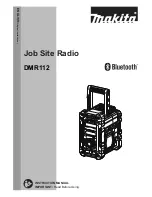
To maximize the ability of your radio to determine a fix,
take note of the following guidelines:
• For your initial fix, hold the radio in the face position.
• Stay in the open. The GPS feature works best where
there is nothing between your radio and the open sky.
Peer-Location on the Display (ASTRO
Conventional only)
This feature is only available for radio-to-radio voice
transmissions, dispatch call and selective call in
conventional ASTRO system. For radio-to-radio
transmission, in order to allow the radio to show peer-
location, the voice should be directly sent from one radio to
another radio without passing through any infrastructure
facility such as repeaters, phone, or DVRS system. Both
the transmitting radio and receiving radio must be
configured to enable them to send and/or receive the GPS
coordinates. You can check with your nearest qualified
technician for more details.
NOTICE:
If the receiving radio is operating in a Mixed Mode
channel, and the voice transmission is through the
conventional ASTRO system then the radio can
receive the location coordinates of its peers.
This feature is also operable in a Scan Active channel or
Scan Talkback channel.
Upon receiving a voice transmission with GPS coordinates
enabled on the receiving radio, the display shows the
coordinates available in full or in short coordinates. There
are two different formats available. Refer to the following
list for the details shown in the Peer-Location quick text.
Consult your agent to pick the best format to configure to
your radio.
Full location coordinates
• PTT ID (This is optional.)
• Longitude and latitude
• Relative distance or direction
Short location coordinates
• PTT ID (This is optional.)
• Longitude and latitude
English
81
















































